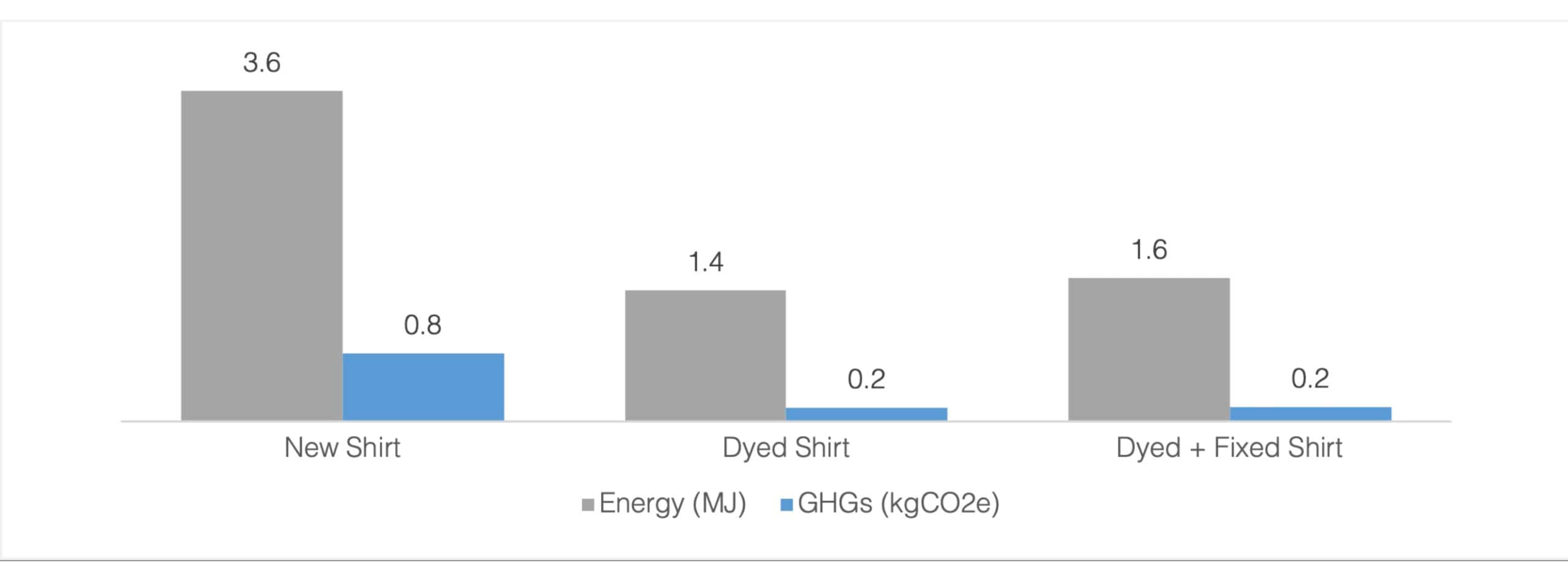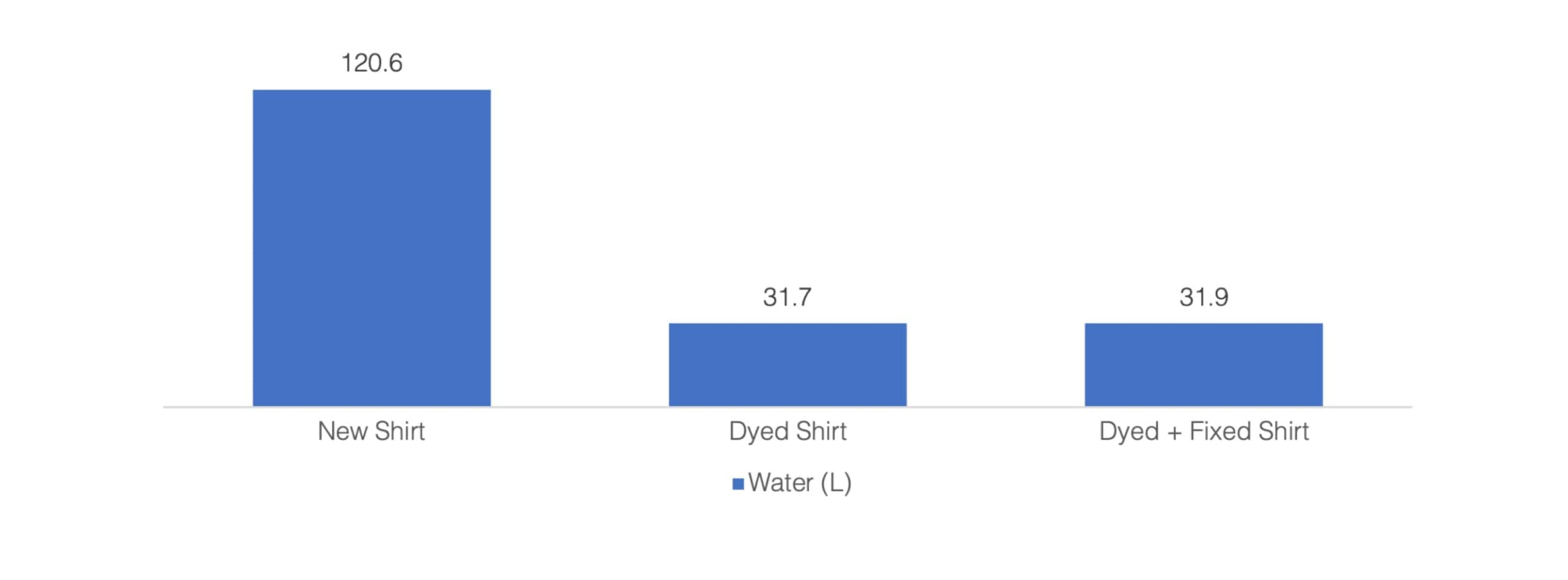Can you tell me a little bit more about your environmental impact?
Brown and Wilmanns Environmental (BWE) conducted a study comparing the relative environmental impacts of dyeing a t-shirt with purchasing a new t-shirt, modeling the behavior of a consumer who does not want to wear a faded t-shirt. They found that dyeing a shirt four times versus buying four new t-shirts reduces CO₂ emissions by 80%.
The study evaluated the water consumption (liters), energy use (megajoules), and greenhouse gas emissions (kgCO2e) over the life span of the original and consequentially dyed t-shirt’s life compared to buying new t-shirts.
The functional unit of this study was laundering a t-shirt 49 times (the average number of launderings for a t-shirt before end of life).
Three models were considered:
- The t-shirt was re-dyed at 13 (weighted average of Rit survey – see below) launderings – this number was derived from a survey of current Rit customers (see below)
- A t-shirt replacement vs. re-dye at 20 launderings
- A t-shirt replacement vs. re-dye at 25 launderings
Relative Resource Consumption and Emissions of Purchasing a New T- Shirt and a New T-Shirt laundered 49 times based on Rit Dye survey Findings (other models findings later in linked report below)
| Dyed T-Shirt | Dyed Fixed Shirt | |
| Energy (MJ) | -61% | -57% |
| GHGs (kgCO2e) | -80% | -79% |
| Water (L) | -74% | -74% |
Total Energy Demand and GHG Emissions

Total Water Consumption

Rit Survey
Rit conducted a survey of their users to collect general demographic information as well as information related to how their consumers use the dye products. This project uses the dyeing information as the basis for washing and dyeing variables. We considered four of the survey questions for this study:
- Do you use Rit ColorStay Dye Fixative after dyeing?
- Which method do you use to solid dye garments?
- On average, how many wash cycles does it take before you notice
color fading on clothing that was dyed using Rit? - On average, how many wash cycles does it take before you notice
color fading on clothing that was dyed commercially?
The results are as follows:
- About 20% of respondents use it always and 35% use it sometimes.
- This shows us that ColorStay Dye Fixative is regularly used and should be
considered as part of this study.
- This shows us that ColorStay Dye Fixative is regularly used and should be
- About 45% use the Bucket or Sink Method, 25% use the Washing
Machine Method, and 29% use the Stovetop Method (rounding completes the last 1%).- All methods have been considered in this study.
- About 22% say after 1-5 washes, 37% say after 6-10 washes, 25% say after 11-19 washes, and 17% say 20+ washes.
- A weighted average of 11 washes per dye job before fading and redyeing is assumed.
- About 13% say after 1-5 washes, 25% say after 6-10 washes, 28% say after 11-19 washes, and 34% say 20+ washes.
- A weighted average of 15 washes per commercial dye/new shirt before the shirt is either dyed or disposed.
The complete report can be found here.
